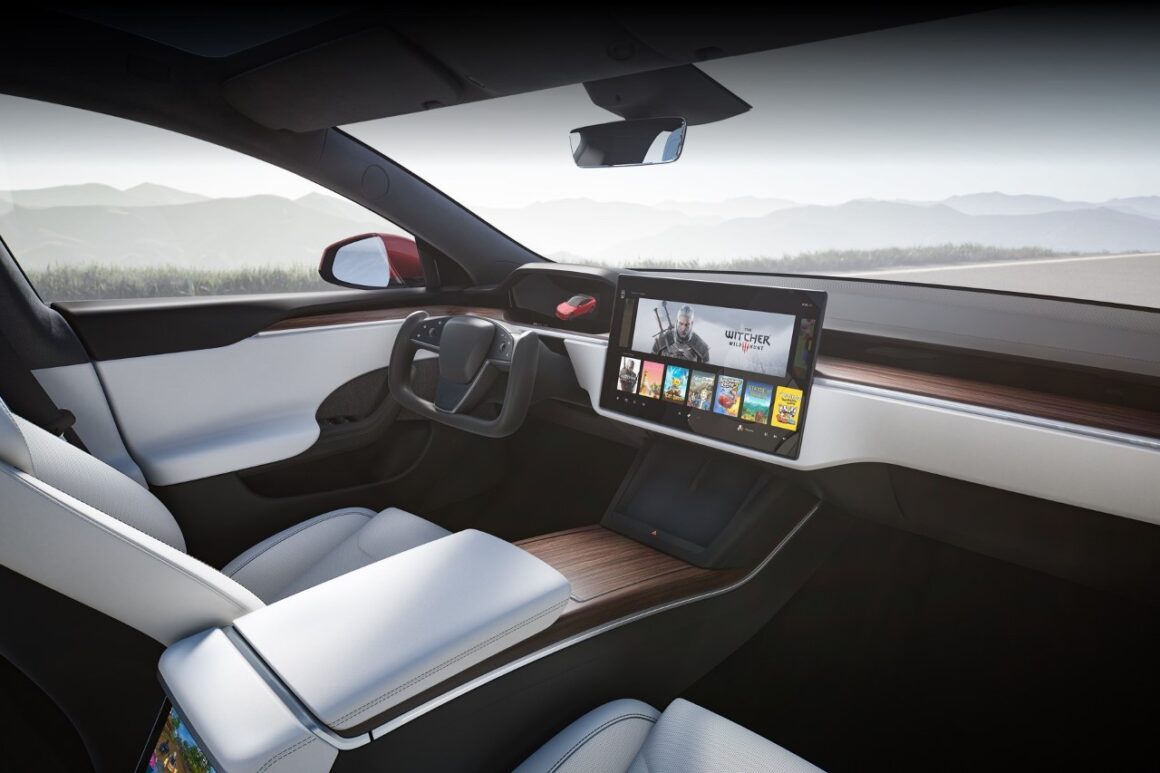Kings of acceleration with a subdued sound, 0-60 mph in less than 2 seconds, and no gasoline expenses? It was enticing at first glance, but the concept is becoming increasingly more seductive – especially when that can be achieved at a reasonable cost!
Futuristic automotive gadgets were not by any means invented by the American car company, but the integrative systems and accessibility of an all-around efficient electric vehicle were certainly popularized by Tesla. Whether it was the sleek, novel chassis of the Tesla Roadster or the fluttering butterfly doors of the Model X that sparked intrigue in the population, the Austin-based automaker has revolutionized the industry for smart technology and electric-based automotive systems.


Fun Fact: Tesla’s debut all-electric Roadster, released in 2008, was the company’s first production vehicle and could run up to 245 miles (394 km) on a single charge – the first of its kind in the electric car space. The lightweight carbon fiber body is based on the Lotus Elise and can accelerate from 0 to 60 mph in roughly 3.7 seconds.
Of course, since the EV revolution, competitors have entered the field en masse and with proprietary technology. Since its founding in 2003, Tesla has continued to burn rubber on the track to the perfect economically-sound consumer vehicle. In this article, we provide a brief comparison analysis and focus on the distinct differences between Tesla’s Model S and Model 3 sedans.


First off – we would like to note the caliber of the company’s entire product line. In addition to the exclusivity and prestige characterized by Tesla ownership, recent models boast superb technical factors that compete with many modern sports cars.
Regarding the two Tesla sedans in question, the design elements are strikingly similar, yet the models are targeted at different segments of the market. Whereas the Model 3 has acted as an introductory “access pass” to the Tesla family, the Model S ups the ante and is geared toward a more affluent clientele, with industry competitors including BMW’s 5 Series and Mercedes E-Class.


So, with the vehicles both being structurally alike, why is there such a disparity in ticket price between the Performance Model 3 (~40k base price) and the standard Model S (~88.5k base price)?
Beginning with dimensions and accessibility, both models offer an extraordinary amount of trunk and storage space without compromising passenger comfort. The Model S is remarkably larger than the Model 3 in terms of size and wheelbase, with the length of the Model S coming in at 1.96 meters as compared to the Model 3’s 1.85-meter-long body. The wheelbase of the Model 3 measures 1.165 meters, while the Model S measures 1.132 meters. The Model 3 also sports 20” wheels, while the Model S can be outfitted with 19” or 21” wheels, giving the latter a weight of around 4,560 pounds, nearly a quarter ton less than its counterpart, weighing 4,048 pounds.


Internally, the Model 3 features a 15″ center touchscreen, while the Model S sports a 17” touchscreen with left-right tilt. The luxury model also offers more cargo space (28 cubic feet versus the Model 3’s 23 cubic feet) and integrates a HEPA air filtration system into the vehicle, protecting the passengers from bacteria and pollution entering the car. Peeking under the hood, we understand why Tesla is the benchmark for electric vehicles in the automotive industry.
Both models use a dual-motor all-wheel drive powertrain, with the Model 3 offering up to 480 HP and an EPA estimate of 315 miles on a single charge and the Model S reaching up to 670 HP and 405 miles on its full charge – not to mention that both options offer a supercharge option up to 250 kW.
As mentioned earlier, the acceleration built into these sedans is outrageous. The Model 3 and Model S both achieve 0-60 in around 3.1 seconds, but the Model 3 can reach top speeds of up to 162 mph as opposed to the standard Model S, which is capped at 149 mph.
Whether or not you’re a fan of fully electric vehicles, the technology and raw power of these vehicles are undeniably impressive. Regarding the comparison between the Model 3 and Model S, it is difficult to say which of these beasts will be more fitting for your lifestyle, especially when the price tag between the two is significantly larger than comparable models in the same luxury or premium segment – not to mention the upgrades and different versions. One thing we can say, however, is that the team at Tesla has paved the way for innovation in the premium automotive industry and has developed a wide range of super cool, enticing electric vehicles.
Read more MOTOR articles HERE